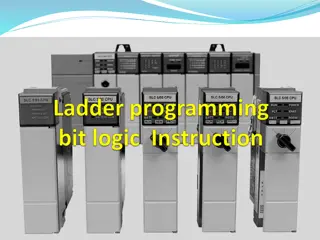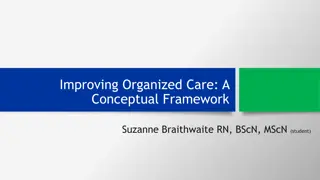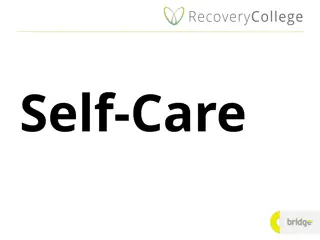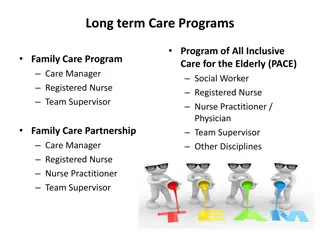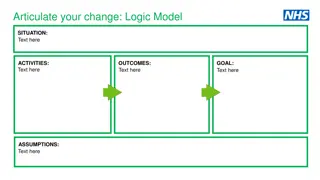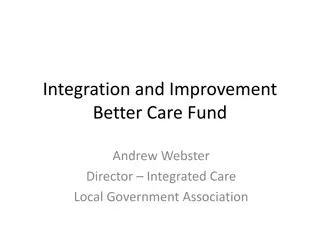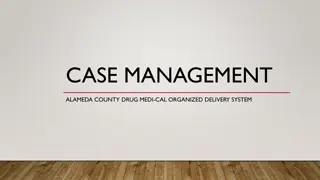
What is Structured Cabling_ And Why You Should Care?
Discover the essentials of structured cabling and learn why it's crucial for your network's efficiency and future growth.
Download Presentation

Please find below an Image/Link to download the presentation.
The content on the website is provided AS IS for your information and personal use only. It may not be sold, licensed, or shared on other websites without obtaining consent from the author. Download presentation by click this link. If you encounter any issues during the download, it is possible that the publisher has removed the file from their server.
E N D
Presentation Transcript
What is Structured Cabling? And Why You Should Care? Have you ever wondered what makes your smart devices communicate seamlessly, your video calls run smoothly, and your data flow effortlessly throughout your home or office? The answer lies in a critical yet often overlooked infrastructure: structured cabling. This essential system forms the backbone of our digital experiences, yet many are unaware of its importance. Understanding Structured Cabling Structured cabling is a comprehensive and organized approach to building a cabling infrastructure that supports multiple hardware uses and remains flexible for both present and future applications. Think of it as the nervous system of your building's technology setup, connecting every digital device and system in an efficient, organized manner. Unlike traditional point-to-point cabling or ad-hoc solutions that can result in a chaotic tangle of wires, structured cabling creates an orderly, manageable, and scalable foundation for all your technological needs. From the internet connection entering your building to the Wi-Fi signal reaching your smartphone, structured cabling makes it all
possible. Companies like Georgia Technical Services (GTS) offer a single solution for all your Residential, Commercial, or warehouse data network installation and low-voltage cabling requirements. You can get their help. Key Components of a Structured Cabling System 1. Entrance Facilities: This is where external telecommunications services connect to your building's internal network. 2. Equipment Room: Houses critical network equipment such as servers and routers. 3. Telecommunications Room: Distributes network connections throughout the building. 4. Backbone Cabling: The main pathways connecting different areas of the network, typically between floors or buildings. 5. Horizontal Cabling: Extends from telecommunications rooms to individual work areas or device locations. 6. Work Area: Encompasses the end-user spaces where devices connect to the network. Read More Article: Why Are Carnegie House Apartments So Cheap? Why Should You Care About Structured Cabling? You might be wondering, "This sounds great for tech companies, but why should I care about structured cabling in my home or small business?" Here are compelling reasons why structured cabling matters to everyone: 1. Enhanced Reliability: A well-implemented structured cabling system significantly reduces network failures, ensuring consistent connectivity. This means fewer frustrating tech problems for you, whether you're working from home, running a business, or simply enjoying your favorite streaming service. 2. Future-Proof Infrastructure: As technology evolves at a breakneck pace, structured cabling ensures your setup can adapt without extensive rewiring. This flexibility is crucial whether you're adding new smart home devices or expanding your business operations.
3. Improved Performance: Properly productivity and user experience. In a world where every millisecond counts, this improved performance can make a significant difference in your daily digital interactions. installed cabling can substantially boost network speeds, enhancing 4. Long-Term Cost Efficiency: While there's an initial investment, structured cabling proves cost-effective over time through simplified maintenance and reduced need for upgrades. This means more money in your pocket in the long run. 5. Increased Flexibility: Adding new devices or reconfiguring spaces becomes much simpler with a structured cabling system in place. Whether you're setting up a new home office or expanding your business, structured cabling makes these changes seamless. Cabling Systems Are More Than Just Wires Structured Cabling Systems aren't just about organizing wires but they're about creating a foundation for your entire digital life or business operations. Think of it like this: A well-designed Structured Cabling System is like having a personal assistant for your technology. It knows where everything should go, how to connect different devices efficiently, and how to adapt when you need to make changes. This "assistant" works behind the scenes to keep everything running smoothly, so you can focus on what really matters whether that's running your business, enjoying time with family, or pursuing your passions. Real-World Benefits of Structured Cabling Let's look at some everyday scenarios where good structured cabling can make a big difference: For Homes: Enjoy streaming without buffering, eliminating family arguments over who's hogging all the bandwidth.
Easily add new smart devices without rewiring your whole house. Set up a professional home office with reliable connections. For Small Businesses: Grow without growing pains by easily adding new workstations or equipment as your business expands. Impress clients with a neat, professional-looking office. Stay connected with reliable internet and phone systems, keeping you in touch with customers. For Larger Organizations: Boost productivity with fast, reliable connections that mean less downtime and more getting things done. Adapt to change by reconfiguring office spaces without major IT headaches. Support new tech, from IoT devices to advanced security systems, being ready for whatever comes next. The Cost of Neglecting Your Cabling Up to 70% of network problems are caused by bad cabling and issues with cable parts. Here are some effects you may come across for neglecting the cabling: 1. Repair and Replacement: The immediate financial burden includes the costs associated with repairing or replacing faulty cabling. This involves not only the purchase of new cables but also labor costs and potential downtime during the replacement process, which can be substantial for large operations. 2. Operational Downtime: Network downtime due to cabling faults can severely impact business operations. For instance, in retail, a failure in the point-of-sale system can lead to lost sales during peak hours. In manufacturing, a production line halt can delay orders and disrupt supply chains.
3. Lost Productivity: Employees may be unable to perform their duties effectively during network interruptions, leading to backlogs and extended project timelines. This inefficiency can have long-term repercussions on business growth and employee morale. 4. Security Risks: Poor cabling can increase vulnerabilities to data breaches and security threats, which may result in significant financial losses, legal penalties, and damage to a company s reputation Read More Article: Where are Most Brownstones in NYC? Making the Right Choice So, you're convinced that structured cabling is important. But how do you make sure you're getting a system that's right for you? Here are some tips: 1. Plan for the future: Think about your needs not just today, but 5 or 10 years from now. 2. Work with professionals: This isn't a DIY project therefore, experienced technicians can design a system that truly meets your needs. 3. Choose quality materials: Skimping on cable quality can lead to big headaches down the road. 4. Document everything: A clear map of your cabling system is invaluable for future maintenance and upgrades. 5. Consider certification: For businesses, having your cabling system certified can provide extra peace of mind and even insurance benefits. Wrap Up Remember, it's not just about the wires and cables but it's about creating a foundation that supports your digital life and helps you thrive in an ever-changing technological landscape. So, the next time you effortlessly stream a movie, video chat with a loved one, or close a big business deal online, take a moment to appreciate the invisible infrastructure that makes it all possible.
Georgia Technical Services (GTS) is your one-stop shop for all your data network installation and low-voltage cabling needs. Whether you're setting up at home, in a commercial space, or a warehouse, we provide reliable solutions that ensure your technology is built on a strong foundation. Trust GTS to deliver the quality and expertise you need to keep your network running smoothly. Site Article: What is Structured Cabling? And Why You Should Care?


